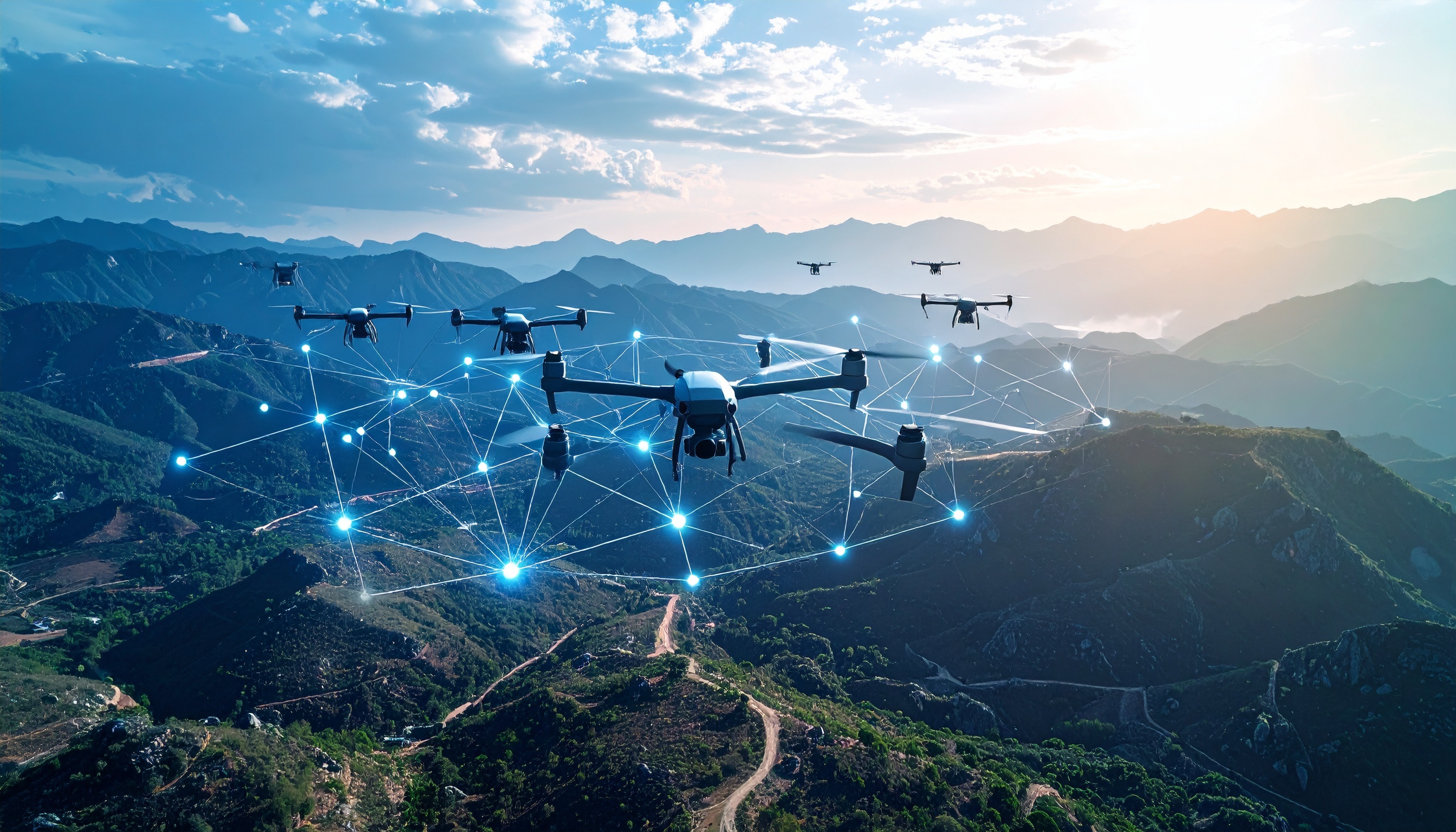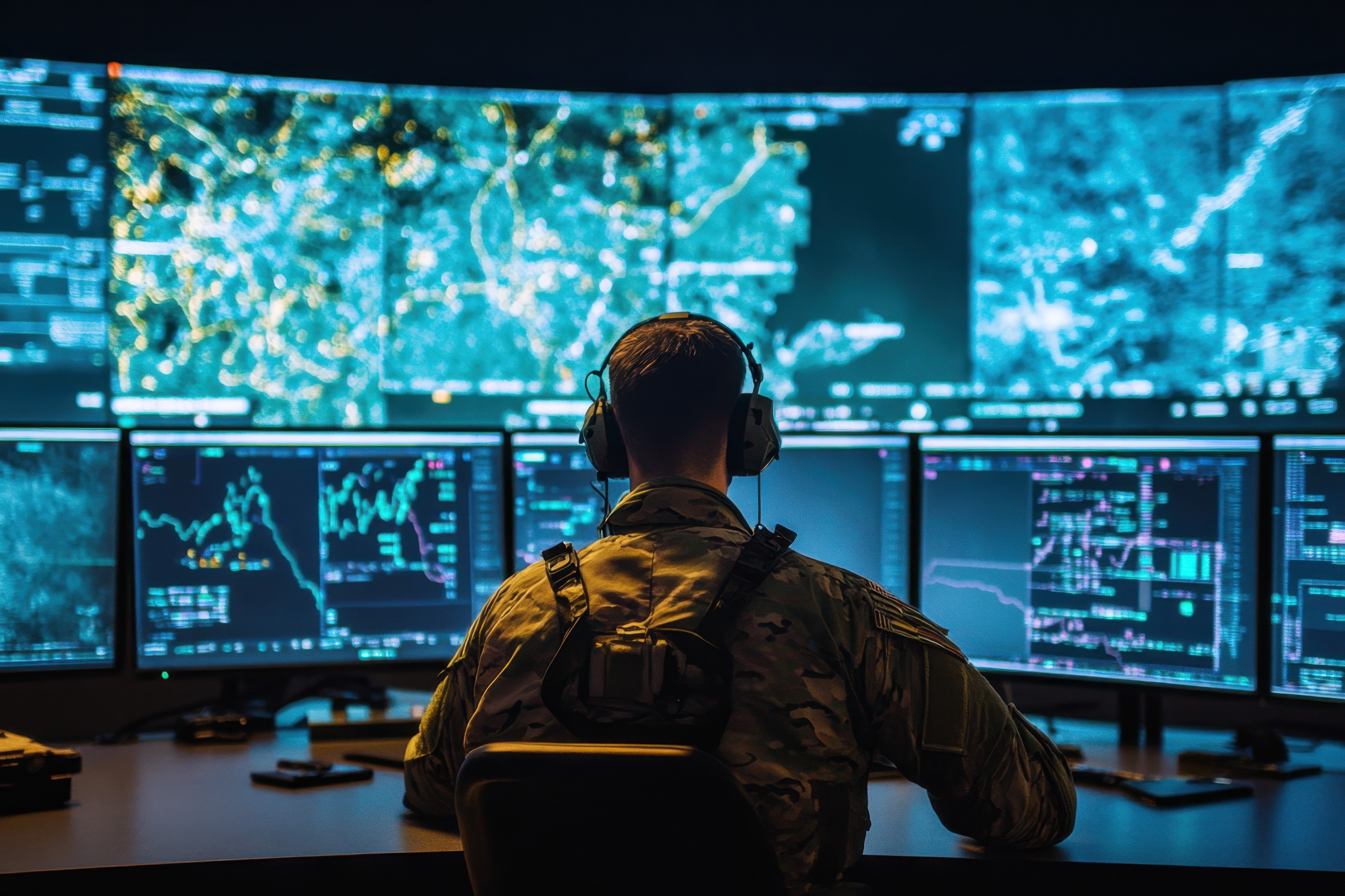In defense and aerospace operations, mission success often depends on how effectively autonomous systems can coordinate under complex constraints. Among these, coordinated target assignments and path planning for unmanned aerial vehicles (UAVs) stand as one of the most computationally demanding and operationally critical challenges. This process determines how a fleet of UAVs is assigned to specific mission targets and how each UAV should navigate through airspace to reach those targets, all while maintaining strict timing, safety, and operational constraints.
Whether in surveillance, electronic warfare, or suppression of enemy air defenses, the ability of multiple UAVs to act in concert, with precision timing and minimal latency, defines both strategic advantage and mission survivability.
Complexity of Coordinated UAV Operations
Modern combat and reconnaissance missions no longer rely on individual UAV performance but on collective behavior. Cooperative UAV teams can survey vast regions, engage multiple targets, and share real-time data. However, this cooperation introduces a combinatorial explosion of variables. Each UAV must be assigned to specific targets, follow a flyable and safe path, avoid restricted or threat-laden zones, and synchronize its arrival with others.
Timing constraints are particularly critical. For instance, simultaneous arrival enhances surprise and increases the probability of neutralizing an air defense network through saturation. Conversely, sequential arrivals — such as detection, strike, and post-strike assessment — require carefully calibrated delays between UAVs. A deviation of even a few seconds can compromise the entire mission.
Why Traditional Algorithms Fall Short
Conventional mission planning relies on classical optimization algorithms — including linear programming, heuristic searches, and genetic algorithms. While effective for small-scale or static problems, these methods struggle under real-world operational uncertainty.
For example, the Weapon Target Assignment Problem (WTAP) — a classic nonlinear integer programming formulation — becomes computationally intractable as the number of UAVs and targets increases. The challenge compounds when environmental uncertainties, moving threats, and stochastic failures are introduced. Traditional solvers can find feasible solutions, but not necessarily optimal or timely ones. In mission-critical scenarios, this delay or suboptimality translates directly into operational risk and cost.
Balancing Flyability, Feasibility, and Safety
Any path generated for an air vehicle must satisfy three essential properties:
- Flyability – Paths must respect the UAV’s kinematic limits; no maneuver should exceed acceleration or turning capabilities.
- Feasibility – Routes must avoid restricted airspace, terrain obstacles, and known threats.
- Safety – Collision avoidance must be ensured both between UAVs and against environmental hazards.
Generating paths that simultaneously satisfy these constraints while maintaining coordination and minimizing fuel consumption is a formidable computational task. Even slight inaccuracies can lead to infeasible flight paths or collisions, especially in dynamic airspaces where UAVs operate in close proximity.
Traditional Approaches
Voronoi diagrams and network-based routing are utilized to identify the shortest feasible paths between UAVs and targets. Others use heuristic or greedy assignment strategies, improving path quality iteratively.
Methods such as classical genetic algorithms have been applied to optimize target assignment and timing; however, they often neglect kinematic constraints or collision risks. Similarly, approaches based on Dubins paths — which combine straight and curved segments — offer mathematically elegant trajectories but fail to account for dynamic obstacles or inter-vehicle safety margins.
In essence, these algorithms operate effectively only under controlled conditions. As the number of UAVs, tasks, and environmental variables scale up, they begin to falter demanding excessive computation time or delivering results that are too simplified for real-world deployment.
In coordinated operations such as simultaneous target strikes, planners must assign UAVs to targets in a way that minimizes total mission time while ensuring synchronized arrival. This involves solving two coupled problems:
- Target Assignment – Determining which UAV should attack which target.
- Path Planning – Generating safe, feasible trajectories that satisfy timing constraints.
Both are inherently NP-hard combinatorial optimization problems. When handled independently, inconsistencies can arise — such as feasible assignments with infeasible flight paths. When solved jointly, computational complexity escalates rapidly.
Structured Framework
To address these challenges, recent research proposes a structured three-phase approach:
- Shortest Path Computation:
Generate a discretized network of the operational airspace and compute the shortest flyable paths between every UAV-target pair using graph-based search techniques. - Optimal Assignment:
Solve a linear bottleneck assignment problem to determine the optimal pairing of UAVs and targets, minimizing overall mission time. For sequential missions, UAVs are reordered by path lengths and adjusted for required time delays. - Path Adjustment and Conflict Resolution:
Modify flight paths by inserting additional waypoints, ensuring synchronization, flyability, and mutual collision avoidance. The structure of the underlying path network ensures that all resulting routes remain feasible and safe.
This approach offers a balance between computational tractability and operational realism. It can automatically handle timing synchronization, path safety, and dynamic constraints without manual intervention — a critical feature for autonomous mission planning systems.
While promising, even these advanced classical algorithms face limits when scaling high-density, uncertainty, or rapidly changing battlefields. The computational burden grows exponentially with each additional UAV or target. Furthermore, traditional systems operate deterministically, making them less adaptable to stochastic or adversarial conditions.
In high-stakes environments — where seconds determine outcomes and the cost of neglect is measured in mission failure or collateral damage — such limitations are no longer acceptable. Decision-makers must now look toward quantum-inspired or hybrid quantum-classical methods (QA-PINN), capable of exploring vast solution spaces far more efficiently.
Mission Optimization
The future of aerospace and defense mission planning will depend on how effectively we integrate these advanced computational paradigms with real-time operational systems. By moving beyond classical heuristics, planners can achieve:
- Faster convergence on globally optimal solutions.
- Adaptive decision-making under uncertainty.
- Scalable coordination across large UAV fleets and multi-domain operations.
The evolution from heuristic to hybrid or quantum-enhanced optimization represents not just a technical shift — but a strategic one. As autonomous aerial operations continue to grow in complexity and interdependence, precision, coordination, and computational foresight will define the next era of mission superiority.





.png)
.png)




.svg)
.svg)
.svg)
.svg)